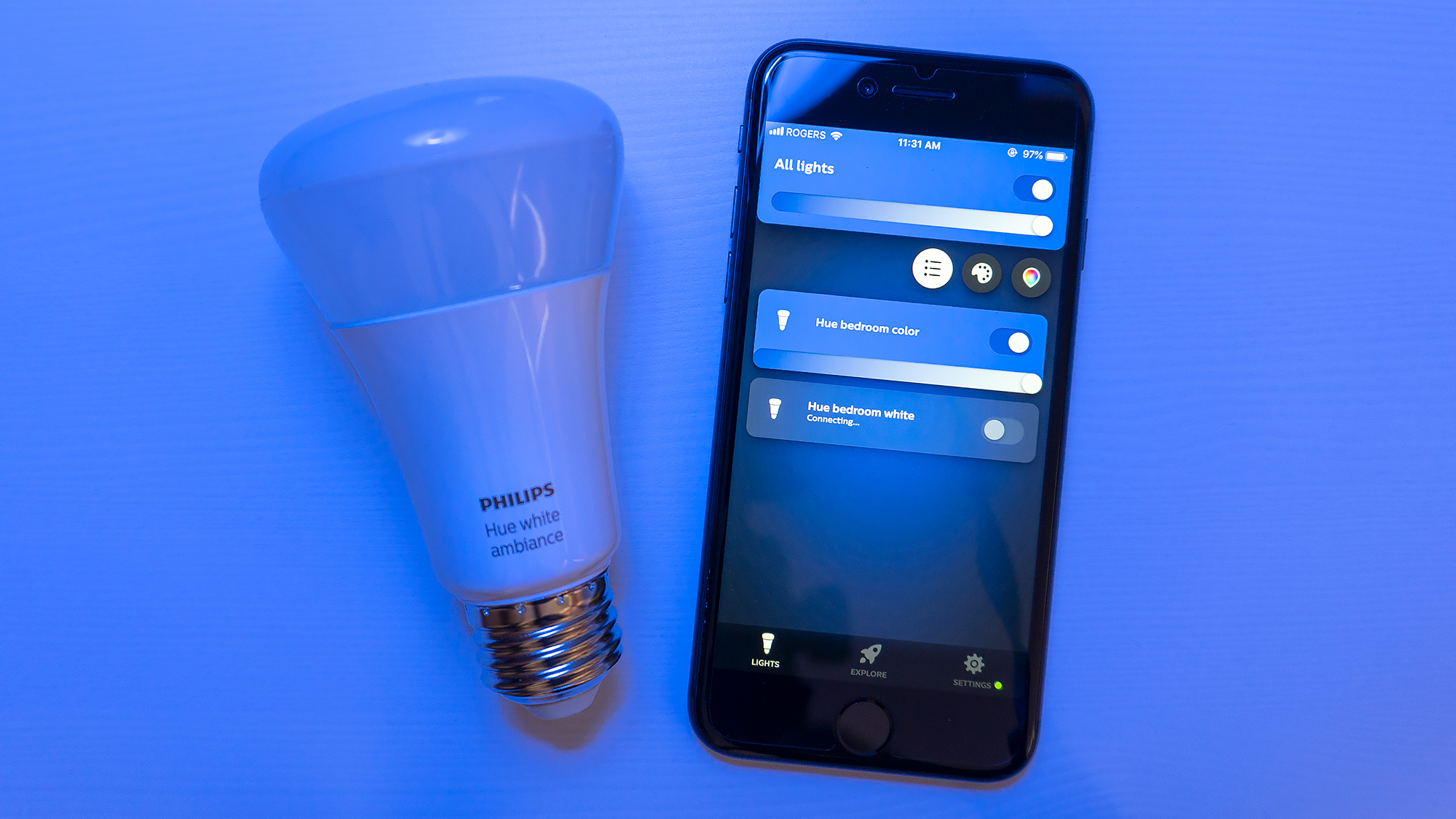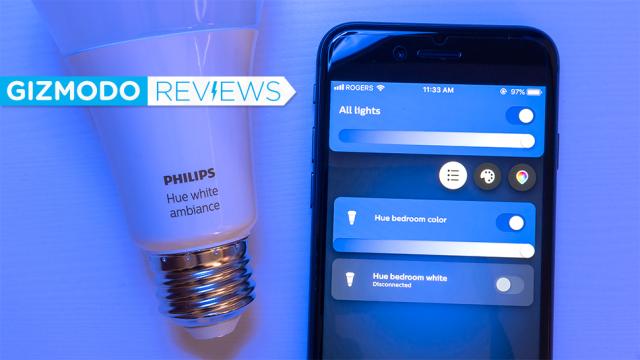Philips’ Hue was one of the first smart home upgrades that worked well and was genuinely useful. After almost seven years, we still think they’re the best smart lighting solution on the market. But if you’re not entirely convinced it’s an upgrade you need, Philips’ new Bluetooth Hue bulbs are the easiest and cheapest way to test drive the tech.

Philips Hue Bluetooth Smart Bulbs
PRICE
White: $25, White Ambiance: $39, White and Colour Ambiance: $80
LIKE
Cheaper and easier to setup than Hue's standard bulbs.
DISLIKE
Requires a separate app.
Editor’s Note: The Phillips Hue with Bluetooth is not currently available in Australia, but it’s sure to land on our shores in future.
That’s not to imply that filling your home with the standard Hue smart bulbs and light strips is a complicated procedure. The bulbs themselves are as easy to install as screwing in a light bulb, but up until now, they’ve required an extra hub connected to a home’s Wi-Fi router that also adds about $75 to the system’s price tag. Installation is straightforward enough, but it’s an extra step I would never trust my parents or less tech-savvy relatives with, nor would I want to talk them through the setup process over the phone.
By comparison, installing and connecting Philips’ new Bluetooth Hue bulbs couldn’t be easier. You simply screw in the bulb, power on the lamp, and then hop into the Hue BT app to connect to it. Assuming you leave Bluetooth on all the time, you don’t even have to go into your smartphone’s Bluetooth settings.
The Hue BT app automatically detects the bulb and handles all of the connectivity for you. There are some trade-offs to the simpler approach, but with countless other Bluetooth smart bulbs now competing with the Hue system, Philips is finally acknowledging that there’s a strong market for a more basic solution.
So why even consider the older Philips bulbs that are dependent on the Hue Bridge and a Wi-Fi network at this point? Over the years Philips has greatly improved the functionality and features of its smart lighting system, but the Bluetooth route comes with quite a few limitations, despite the bulbs costing the same price.
Each bulb can connect to and remember up to 15 different devices, including smartphones, tablets, and even smart speakers like an Amazon Echo or Google Home, so more than one user can control them. But each device can only control up to 10 bulbs, and the setup process has to be done on every single Bluetooth device, for every single bulb. With the Hue Bridge, once you add a bulb, every device in your home automatically has access to it. Count all the bulbs in your house, and you’ll realise why the Bluetooth route might not be the ideal solution for a lot of people.
At launch, the assortment of Hue Bluetooth bulbs is also limited to just two sizes (standard A19 or larger BR30 for recessed ceiling lighting) and three versions offering different colour options: Hue White, which produces a single warm white tone, Hue White Ambiance, which allows the bulb’s tone to be adjusted from cool white to warm white and the Hue White and Colour Ambiance, which offers both white tone adjustments, as well as 16 million additional colours across the entire spectrum. Colour adjustments are stored in the Hue Bluetooth app, but you can’t easily share them with a roommate or another family member.
There’s undoubtedly plenty of Hue users who love having the ability to light their homes in a rainbow of colours because it’s a feature that’s been continually developed and expanded over the years. But I actually found the novelty of the full colour bulbs wore off quickly after I started using the Hue system many years ago, and I tend to stick to the cheaper white ambiance bulbs now.
So I actually think the Hue Bluetooth bulbs are the better way to try out the Hue system, especially if you live in a smaller home or apartment. You’ll be saving yourself the cost of the Hue Bridge which runs about $80, while enjoying a simplified setup and installation process.
But you also don’t have to stress over giving up the more advanced features of the Hue ecosystem (like lighting that matches what you’re watching on TV, timers, motion detectors, and even Apple HomeKit support) because you’re not. It’s not immediately obvious, but in addition to Bluetooth, the new bulbs also still support the ZigBee wireless protocol, which is how the Hue Bridge communicates with them.
So if you buy the new Hue Bluetooth bulbs and end up liking them, you can eventually upgrade to the Hue Bridge and continue using your bulbs with the full Hue feature list. Migrating your bulbs from the Bluetooth version of the Hue app to the other version (I’m not sure why they can’t be unified, which is a little annoying) is simple.
Assuming Signify adds Bluetooth to all the bulbs in its Philips Hue lineup, including the excellent LED lightstrips which are an easy way to add invisible accent lighting around a home, I’m not sure why anyone would buy the non-Bluetooth version of Hue’s bulbs from here on out. They make the Hue system more affordable, easier to install, and simpler to use for those who are just starting out, but without leaving users locked out of the more advanced features the Hue system has to offer.
README
-
No hub required, and installation through the Philips Hue BT app is pleasantly simple and streamlined.
-
The same price as standard Philips Hue smart bulbs.
-
Sacrifices advanced features like timers, compatibility with other Hue accessories like dimmer switches and motion detectors, sharing colour settings, grouping bulbs and support for Apple’s HomeKit. The bulbs also have to be installed on every single device you want to control them with.
-
You can only control up to 10 Hue Bluetooth bulbs at a time from the app.
-
Each bulb supports Bluetooth and Zigbee so they can be eventually connected to the wireless Hue Bridge to take advantage of all the Philips Hue features.
-
Only three of the Hue bulb products now include Bluetooth support.
